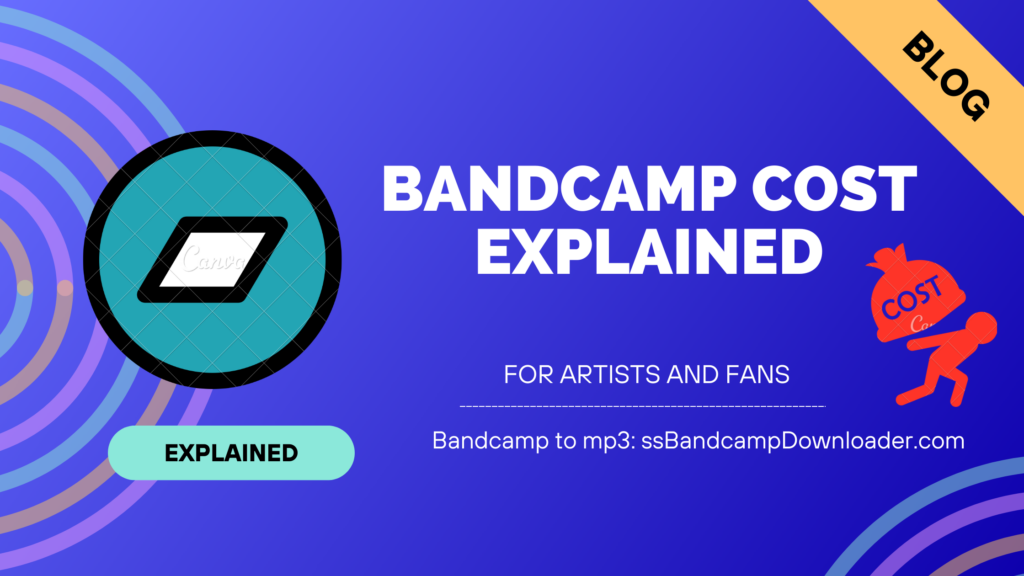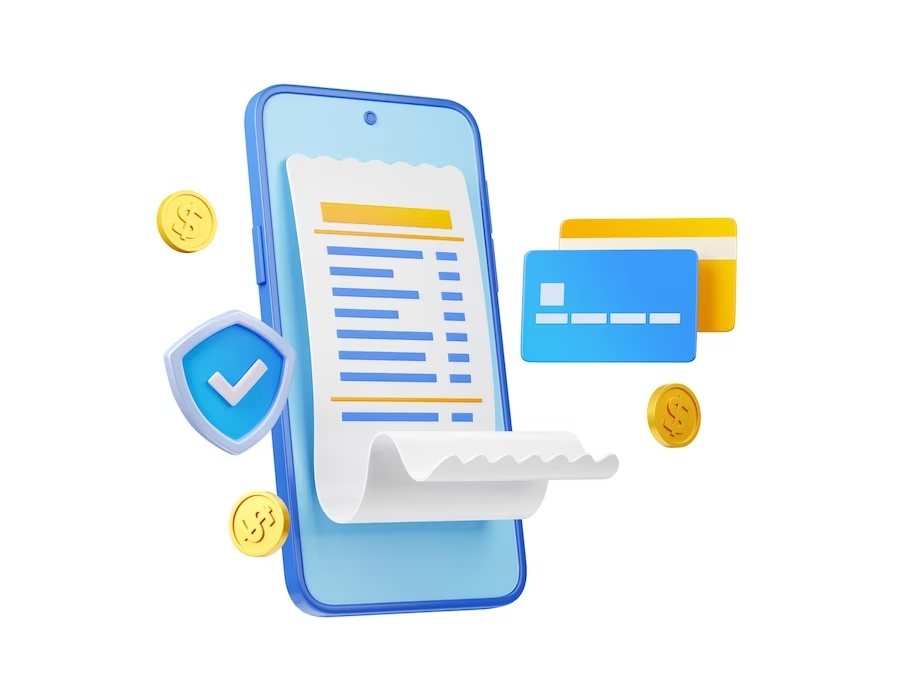Bandcamp is a powerful and artist-friendly platform that offers independent musicians and labels the opportunity to share their music with the world. However, understanding the cost of using Bandcamp is essential for those looking to harness its capabilities effectively.
This article delves into the intricacies of Bandcamp’s pricing structure, transaction fees, payment processing costs, and the expenses associated with selling physical merchandise.
We will also explore the subscription pricing models and provide real-world case studies, all while keeping a keen eye on the crucial task of balancing costs with potential earnings. Join us as we uncover the financial aspect of pursuing your passion on Bandcamp.

Bandcamp Pricing Tiers
When it comes to understanding how much Bandcamp costs, the first crucial aspect to consider is the various pricing tiers the platform offers to its users. Bandcamp offers a range of pricing options, each catering to different needs and goals. Let’s take a closer look at these pricing tiers:
Free Tier
The most accessible entry point for artists on Bandcamp is the free tier. In this tier, artists can create their profiles, upload and share their music, and interact with their audience.
It’s a fantastic starting point for emerging artists who want to test the waters without any upfront financial commitment. However, it comes with some limitations, such as a cap on free downloads and minimal customization options for your artist page.
Bandcamp Pro
For artists looking for more control and customization, Bandcamp offers the Bandcamp Pro tier. This comes at a modest monthly fee, and it unlocks various features that enhance your music distribution.
Bandcamp Pro provides artists with advanced tools for building their music catalog, customizing their artist pages, and analyzing their audience’s engagement. It also allows you to set your own pricing for your music.
Bandcamp for Labels
Labels, often managing multiple artists, have specific needs, and Bandcamp recognizes this. The Bandcamp for Labels tier caters to these needs by offering specialized features for labels, including the ability to manage multiple artists under a single label account.
This can streamline administrative tasks and provide a more cohesive experience for both labels and their artists. Pricing for this tier varies based on the number of artists you represent.
Understanding the differences and benefits of these Bandcamp pricing tiers is the first step in determining the cost that aligns with your music career goals. Your choice should depend on factors such as the level of customization you require, the number of artists you manage, and your budget. Remember that Bandcamp’s pricing tiers are designed to provide flexibility for artists and labels at various stages of their careers, making it an excellent platform for both newcomers and established musicians.
Transaction Fees

Another crucial aspect of understanding the cost of using Bandcamp revolves around transaction fees. These fees are a significant consideration, as they directly impact the earnings of artists and labels on the platform. Let’s explore this topic in detail:
Explaining the Revenue Share
Bandcamp operates on a revenue-sharing model, which means that when you make a sale on the platform, the revenue generated is split between you (the artist or label) and Bandcamp.
The specifics of this split depend on your pricing tier. For example, in the free tier, Bandcamp typically takes a more substantial share of revenue compared to the Bandcamp Pro tier.
How Transaction Fees Work
In addition to the revenue share, Bandcamp also charges transaction fees. These fees are applied to every sale you make, whether it’s a digital music download, merchandise, or a subscription.
The exact fee structure can vary, so it’s essential to consult Bandcamp’s fee schedule to understand the current rates. These fees cover Bandcamp’s operational costs and the processing of financial transactions.
Impact on Artists and Labels
Transaction fees may seem small for individual sales, but they can add up over time. It’s important to factor them into your pricing strategy when setting the cost of your music and merchandise on Bandcamp.
This is especially relevant for artists offering lower-priced items, as a larger portion of their earnings might be eaten up by fees. To mitigate the impact of transaction fees, some artists choose to set their prices slightly higher, allowing them to maintain their desired profit margin.
Others may opt for a subscription-based model, where fans pay a monthly fee for access to music and exclusive content, reducing the impact of individual transaction fees.
Understanding transaction fees is a critical component of managing the cost of using Bandcamp. As an artist or label, it’s essential to factor these fees into your pricing strategy and consider how they align with your financial goals. Bandcamp’s transparency about their fee structure makes it easier for you to make informed decisions regarding the pricing of your music and merchandise on the platform.
Payment Processing Costs
In addition to Bandcamp’s pricing tiers and transaction fees, it’s essential to consider payment processing costs when calculating the overall expense of using the platform. Payment processing costs can impact how much you ultimately receive from your sales. Let’s delve into this aspect:
Payment Methods on Bandcamp

Bandcamp supports various payment methods to cater to a global audience. These payment methods typically include credit cards, PayPal, and other region-specific options. Offering multiple payment options is convenient for fans, but it’s important to understand that each payment method comes with its own set of processing fees.
Processing Fees for Different Methods
The specific processing fees associated with different payment methods can vary. Credit card processing fees are typically charged as a percentage of the transaction amount plus a fixed fee per transaction.
PayPal also charges fees for processing payments, and the exact rates may vary based on your location and the type of transaction (domestic or international).
It’s crucial to consult Bandcamp’s detailed information on payment processing fees, as they may change over time. Understanding these fees can help you determine the most cost-effective payment methods for your audience and minimize the impact of payment processing costs on your earnings.
Implications for Artists
Payment processing costs may seem like a minor detail, but they can have a significant impact on your bottom line, especially if you have a high volume of transactions. When deciding on your pricing strategy, you’ll need to consider these fees.
For instance, if you price your digital album at $10, a portion of that amount will go towards payment processing fees. As such, artists often factor these costs into their pricing strategy to ensure they receive their desired revenue.
To optimize your earnings and minimize payment processing costs, it’s advisable to periodically review the payment methods you offer and the associated fees.
Understanding the cost implications of each method can help you make informed decisions when selecting your preferred payment options on Bandcamp.
Payment processing costs are an important element to keep in mind when evaluating how much Bandcamp costs you as an artist or label. While these fees may appear minor for individual transactions, they can accumulate over time and impact your overall earnings, making it essential to factor them into your financial planning on the platform.
Selling Merchandise and Physical Goods
For many artists and labels, selling merchandise and physical goods is a vital part of their revenue strategy on Bandcamp. However, the cost of offering physical items can vary significantly, and understanding this aspect is crucial. Let’s delve into this topic:
Costs Associated with Physical Merch
Selling merchandise on Bandcamp is a fantastic way to connect with your audience and generate additional income. However, it’s essential to consider the costs associated with physical items.
These costs include manufacturing expenses, packaging materials, and shipping costs. The exact expenses will depend on the type of merchandise you offer and your supplier.
Integration with Fulfillment Services
To simplify the process of selling physical goods, Bandcamp offers integration with various fulfillment services.
These services can help with the manufacturing, packaging, and shipping of your merchandise. While these services come at an additional cost, they can save you time and effort, allowing you to focus on your music and fans.

Tips for Optimizing Merchandise Sales
To maximize your earnings while selling merchandise on Bandcamp, consider offering a range of items that resonate with your audience.
High-quality designs, unique items, and limited editions can entice fans to make a purchase. Additionally, providing clear and reasonable pricing for your merchandise helps build trust with your audience.
It’s crucial to incorporate the expenses associated with selling physical goods into your pricing strategy. Be transparent with your fans about any potential shipping costs, and consider offering bundled deals that include digital music downloads to provide added value.
Selling merchandise on Bandcamp can be a lucrative venture, but it’s essential to manage your costs effectively. By understanding the expenses related to manufacturing, packaging, and shipping, and by optimizing your merchandise offerings, you can turn this aspect into a profitable part of your Bandcamp experience. Keep in mind that, as with all aspects of the platform, transparency and clear communication with your fans are key to building trust and ensuring successful merchandise sales.
Understanding Subscription Pricing
Subscription pricing on Bandcamp offers a unique way for artists and labels to build a consistent and loyal fan base while generating recurring revenue. Let’s explore this subscription model in more detail:
Benefits of Offering Subscriptions
Subscription pricing on Bandcamp provides several benefits for artists and labels. It allows you to offer exclusive content, such as early access to new music, behind-the-scenes material, and special releases, to your most dedicated fans.
Subscribers are often more financially committed to your work, providing a steady income stream that can support your creative endeavors.
Subscription Pricing Models
Bandcamp offers flexibility when it comes to subscription pricing. You can set your own monthly fee for subscribers, making it accessible to a wide range of fans.
This flexibility ensures that artists can cater to both budget-conscious supporters and those willing to pay more for premium content.
How Subscription Fees Are Calculated
When a fan subscribes to your Bandcamp page, the subscription fee is charged monthly. Bandcamp takes a small percentage of these fees as a service charge, similar to transaction fees for one-time purchases.
The remaining amount goes to you, the artist or label. It’s crucial to consider Bandcamp’s service charge when setting your subscription price to ensure that you meet your revenue goals.
Subscription pricing can be an excellent way to generate reliable income while nurturing a community of dedicated fans. By offering valuable and exclusive content to your subscribers, you can build a stronger connection with your audience.
When setting your subscription fees, keep in mind the balance between providing added value to your subscribers and meeting your financial goals.
Understanding subscription pricing is key to effectively utilizing this feature on Bandcamp. By offering compelling content and transparent pricing, you can create a sustainable revenue stream and engage with your most enthusiastic supporters in a meaningful way.
Case Studies
Examining real-world examples of artists and labels on Bandcamp can provide valuable insights into how the platform’s costs and strategies can affect your music career. Let’s explore some case studies to understand the practical side of using Bandcamp:
A. Real-World Examples of Artists’ Bandcamp Costs: By looking at specific artists, you can gain a better understanding of how Bandcamp’s pricing tiers and fees impact their earnings. For instance, emerging independent musicians often start with the free tier to gain exposure, but they might transition to the Bandcamp Pro tier as their audience grows. This shift allows them to access advanced features that can help boost their sales.
B. How Various Pricing Tiers Affect Earnings: Case studies can also illustrate how different pricing tiers affect artists’ revenue. You may find that artists using the free tier generate less income due to the revenue split and transaction fees. In contrast, those on the Bandcamp Pro or Label tier may enjoy higher earnings as they have more control over their pricing and experience fewer limitations.
C. Tips from Successful Bandcamp Artists: Successful artists often share their experiences and strategies on Bandcamp. You can learn valuable lessons from them, such as the importance of engaging with your audience, setting fair pricing for your music, and leveraging Bandcamp’s tools for marketing and promotion. These insights can help you make informed decisions about your own Bandcamp journey.
Case studies provide a practical look at how artists and labels have navigated Bandcamp’s costs and pricing structures. By analyzing these examples, you can tailor your approach to the platform based on your goals and budget. Whether you’re just starting or an established musician, case studies offer valuable lessons on optimizing your experience and maximizing your earnings on Bandcamp.
Factors Influencing Your Bandcamp Costs
Several factors can influence how much Bandcamp costs for you as an artist or label. It’s crucial to consider these elements to make informed decisions and manage your expenses effectively. Let’s explore the key factors:
Evaluating Your Goals and Needs
One of the most significant factors influencing your Bandcamp costs is your specific goals and needs.
Are you a new artist looking to gain exposure, or an established musician aiming to boost sales and revenue? Your objectives will determine the pricing tier that aligns best with your aspirations.
Balancing Costs with Potential Earnings
Your financial situation is another essential factor. Artists with limited budgets may start with the free tier to minimize costs, while those with more financial flexibility might opt for Bandcamp Pro or Label tiers to access advanced features. It’s crucial to find the right balance between costs and potential earnings.

Making Informed Decisions
Transparency and information are your best allies when making Bandcamp-related decisions. By understanding the cost implications of each pricing tier, transaction fees, and payment processing costs, you can make choices that align with your goals. It’s advisable to regularly review Bandcamp’s fee schedule and stay updated on any changes that may affect your expenses.
By carefully considering these factors, you can tailor your Bandcamp strategy to suit your unique circumstances. Whether you’re an emerging artist or a seasoned label, understanding your goals and budget and making informed decisions about pricing and costs will help you optimize your experience on the platform.
Comparing Bandcamp Costs to Other Platforms
When determining how much Bandcamp costs, it’s essential to consider how its pricing compares to other music distribution and streaming platforms. This evaluation can help you make an informed decision about where to invest your resources. Let’s examine this comparison:
Analyzing Costs vs. Benefits
Each music platform comes with its own set of costs and benefits. While Bandcamp offers flexibility and direct engagement with your audience, other platforms like Spotify and Apple Music focus on streaming and offer different monetization models.
Consider what each platform provides in terms of exposure, revenue potential, and audience reach and weigh these against the associated costs.
Pros and Cons of Bandcamp Pricing
Bandcamp is known for its artist-friendly approach, allowing you to set your pricing, control your content, and engage directly with your fans.
While it offers valuable features, such as subscription pricing, it may not have the same scale and reach as larger streaming platforms. It’s vital to weigh the pros and cons of Bandcamp’s pricing in comparison to others.
Customization and Control
One significant advantage of Bandcamp is its customization and control over your content. You can design your artist page, set your pricing, and offer exclusive merchandise. For artists valuing this level of control, Bandcamp can be a preferred choice, even with associated costs.
Conclusion
In conclusion, understanding how much Bandcamp costs is essential for artists and labels looking to make the most of this versatile platform.
We’ve explored the various pricing tiers, transaction fees, payment processing costs, and the expenses associated with selling merchandise. We’ve also delved into subscription pricing and examined real-world case studies to offer practical insights.
By evaluating factors such as your goals and financial situation and comparing Bandcamp’s costs to other platforms, you can make informed decisions tailored to your unique needs. Bandcamp’s transparency and artist-friendly features make it a powerful tool for musicians, allowing them to connect with their audience, generate revenue, and advance their careers.
FAQs
Bandcamp’s free tier allows artists to create profiles, upload and share their music, and interact with their audience without any upfront cost. However, it comes with limitations such as a cap on free downloads and fewer customization options for artist pages.
Bandcamp operates on a revenue-sharing model. When you make a sale, Bandcamp takes a percentage of the revenue, which varies based on your pricing tier. In addition to the revenue share, Bandcamp also charges a transaction fee for each sale.
Yes, you can sell physical merchandise on Bandcamp. The costs associated with merchandise sales include manufacturing expenses, packaging materials, and shipping costs. Bandcamp also offers integration with fulfillment services that come at an additional cost.
Offering subscription pricing allows you to provide exclusive content to your most dedicated fans, generate recurring revenue, and build a loyal fan base. Subscribers often have a higher level of financial commitment to your work.
Bandcamp offers customization and control over your content, making it a preferred choice for artists valuing these features. However, the costs should be compared to other platforms like Spotify and Apple Music, considering factors such as audience reach and monetization models, to make an informed choice that aligns with your goals.
